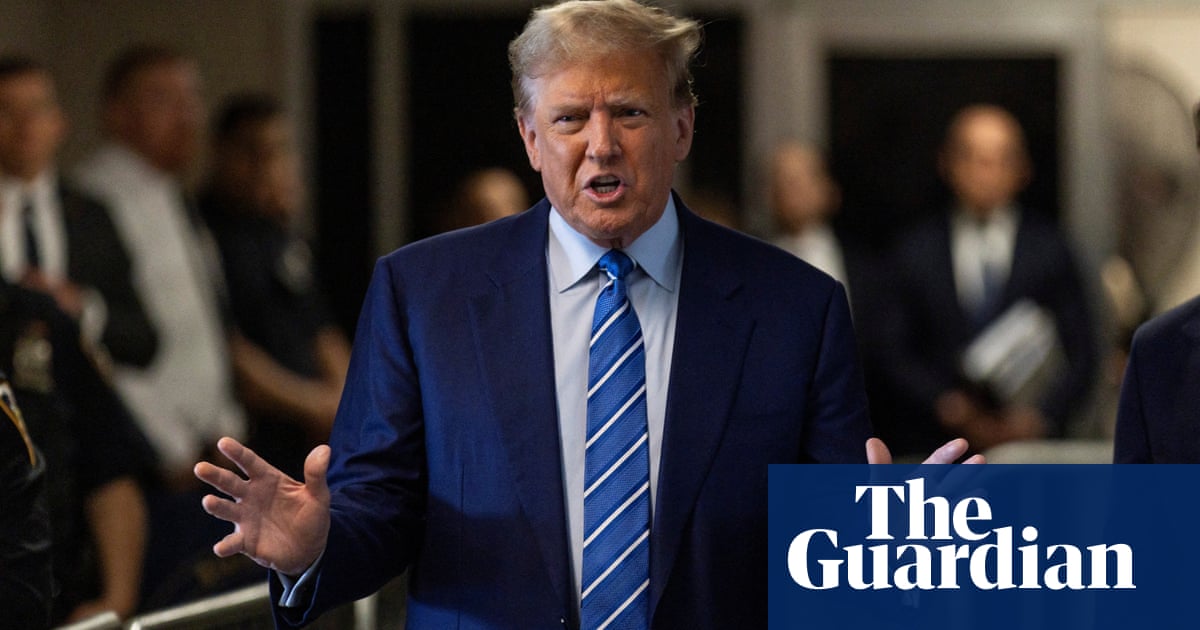Media
Joe Biden begins media blitz as he tries to break into the coronavirus conversation – CNN


Media
First 3 jurors picked for Trump's hush money trial: Live updates – The Hill


Former President Trump is back in a Manhattan courtroom Tuesday for the continuation of jury selection in his criminal hush money trial.
The process is expected to last a minimum of several days as hundreds of New Yorkers will be whittled down to 12 jurors with six alternates.
More than half of the nearly 100 prospective jurors in the first round of jury selection Monday were almost immediately excused after they said they could not be fair or impartial in a trial whose parameters date back to Trump’s 2016 election.
By Tuesday afternoon, that initial batch of 96 potential jurors that began their process the day before had been whittled down to 24.
No jurors picked on Trump’s first day of hush money trial: Day 1 Recap
5 takeaways from first day of Trump’s criminal trial
Follow below for live updates from The Hill’s Zach Schonfeld in New York.
New York Hush Money Case
Copyright 2024 Nexstar Media Inc. All rights reserved. This material may not be published, broadcast, rewritten, or redistributed.
Media
Trump faces contempt motion after social media posts about New York trial
|
|


About an hour after day one of Donald Trump’s criminal trial in Manhattan closed, the former president published the first of what would be a series of posts on Truth Social about his disdain for the trial, specifically his required attendance.
The Manhattan district attorney, Alvin Bragg, filed a motion in papers made public on Tuesday to hold Trump in contempt of court for violating a partial gag order in the case.
Prosecutors said that Trump had already violated his gag order three times, posting about the witnesses Michael Cohen and Stormy Daniels on social media. They asked the judge to fine Trump $3,000 for the violation. Merchan said he will hold a hearing on the alleged violations on 23 April.
In his posts, Trump blasted Judge Juan Merchan for requiring Trump to attend the trial every day it is in session. The trial, centered on hush-money payments Trump funneled to the adult film star Stormy Daniels before the 2016 presidential election, is expected to last at least six weeks. Daniels said she and Trump had a brief affair in 2006.
Attending the trial, Trump said, would mean he will have to miss the high school graduation of his son, Barron Trump.
“Who will explain for me, to my wonderful son, Barron, who is a GREAT Student at a fantastic School, that his Dad will likely not be allowed to attend his Graduation Ceremony, something that we have been talking about for years,” Trump wrote on Monday afternoon after court ended for the day. Trump called Merchan a “Conflicted and Corrupt New York State Judge” overseeing “a bogus ‘Biden Case’”.
Trump said that he would also be unable to attend the US supreme court hearing arguments for his presidential immunity claims over the January 6 insurrection.
“This shows such great disdain and disrespect for our Nation’s Highest Court, especially for a topic so important as Presidential Immunity, without which our country would never be the same!” Trump wrote on Truth Social.
Though Merchan subjected Trump to a gag order before the trial began, it only extends to prosecutors other than Bragg, witnesses, court employees, jurors and their families. Trump is free to criticize Merchan himself, though it will probably not help Trump win the favor over the judge, who will decide on Trump’s sentence if the jury finds him guilty.
Before the trial, Merchan extended the gag order to cover his family and Bragg’s family after Trump posted about Merchan’s daughter, who worked for a company that helped Democratic candidates with digital campaigns. Trump and his lawyers have twice tried to get Merchan recused from the case, to no avail.
Trump’s lawyers in court argued that the posts were not covered by the gag order as Trump was responding to allegations the witnesses made. In another post on Tuesday morning, Trump called Merchan a “Trump Hating Judge” who “won’t let me respond to people that are on TV lying and spewing hate all day long.
“He is running rough shod over my lawyers and legal team,” Trump wrote. “I want to speak, or at least be able to respond. Election Interference! RIGGED, UNCONSTITUTIONAL TRIAL! Take off the Gag Order!!!”
Jury selection continues on Tuesday and could take up much of the trial’s first week.
Trump’s criminal hush money trial: what to know
-
A guide to Trump’s hush money trial – so far
-
The key arguments prosecutors will use against Trump
-
From Michael Cohen to Stormy Daniels: The key players





Media
Group Black Acquires Galore Media Inc.
|
|

Group Black has acquired the digital marketing and influencer agency Galore Media Inc., which specializes in content and activations around beauty, pop culture and fashion. The companies are set to make the announcement Tuesday at marketing conference Possible Miami. Terms of the deal were not disclosed.
Galore has featured the likes of Zendaya, Bad Bunny and Kylie Jenner on its digital covers, with influencer and former “Dancing with the Stars” contestant Lele Pons as Galore’s latest cover face of an issue that will include the next generation of Latin and Hispanic creators. Pons is part of the company’s talent agency, Galore Agency.
More from WWD
Galore claims 15 million users a month through its various social channels and has collaborated with brands including Samsung, Apple and Estée Lauder.
Galore cofounders Mike Albanese and Prince Chenoa will join Group Black as senior vice president and editor in chief of Galore, respectively.
“Looking forward, we plan to further Galore’s dominance with culturally connected diverse audiences through developing bespoke content and experiences tied to beauty, fashion, lifestyle and music,” said Travis Montaque, Group Black chief executive officer and founder. “Our focus extends beyond mere social media presence; we plan to elevate Galore’s editorial and content offerings, enriching its digital footprint and solidifying its cultural relevance.”
Added Chenoa: “Group Black understands culture authentically, and I could not think of a better partner to help amplify and grow Galore’s reach and mission.”





-



 Sports2 hours ago
Sports2 hours agoTeam Canada’s Olympics looks designed by Lululemon
-
Real eState10 hours ago
Search platform ranks Moncton real estate high | CTV News – CTV News Atlantic
-
Tech10 hours ago
Motorola's Edge 50 Phone Line Has Moto AI, 125-Watt Charging – CNET
-
News23 hours ago
Budget 2024 sets up a ‘hard year’ for the Liberals. Here’s what to expect – Global News
-



 Investment18 hours ago
Investment18 hours agoSo You Own Algonquin Stock: Is It Still a Good Investment? – The Motley Fool Canada
-
Media23 hours ago
Psychology group says infinite scrolling and other social media features are ‘particularly risky’ to youth mental health – NBC News
-
Economy21 hours ago
China’s economy grew 5.3% in first quarter, beating expectations – CityNews Halifax
-



 Sports22 hours ago
Sports22 hours agoTiger Woods finishes Masters with his highest score as a pro, sets sights on coming majors – The Globe and Mail







